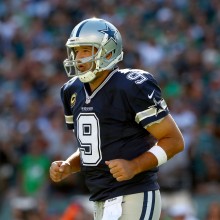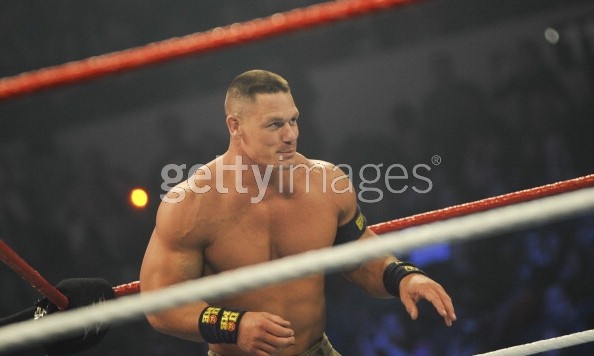On Monday’s RAW live from Pittsburgh, the top face of WWE, John Cena, got his United States Championship rematch with Rusev for WrestleMania XXXI. In typical John Cena fashion, he did so with heel tactics.
Randy Orton was the original choice to become WWE’s super-face in the mid-2000s, as the company lost long-time top stars “Stone Cold” Steve Austin to injury and The Rock to Hollywood. Audiences didn’t take to Orton as a good guy initially, which opened the door for John Cena.
However, Orton has jumped back and forth from heel to face throughout his career — and he’s done so making virtually no changes to his character.
Orton’s greatest success has come as “The Viper,” a temperamental persona capable of snapping and injuring an opponent at any moment. It’s a role tailor-made for a heel, yet Monday on RAW, it was the catalyst to set up a face Randy Orton against Seth Rollins at WrestleMania XXXI.
All forms of entertainment paint heroes in shades of gray. Breaking Bad is my favorite TV series in recent memory, and focal character Walter White is decently dark; downright evil at times.
Perhaps a more apt comparison is the world of comic books, since its tenets intersect with those of wrestling in many ways. Widely successful comic book film adaptations The Dark Knight and Captain America: Winter Soldier deal with heroes violating personal freedoms as a means to another end.
However, these movies acknowledge this complicated plot point without compromising the overall integrity of the heroes. WWE fails to acknowledge the hypocrisy of John Cena’s character touting “Hustle, Loyalty and Respect” while he allows other faces to be fired and attacks opponents unprovoked. Likewise, Randy Orton viciously injuring a rival to the point of a stretcher job is cheered as eye-for-an-eye justice.
Really, the visual of Seth Rollins in a gurney with a neck brace should make him one of the more sympathetic characters heading into WrestleMania. The same goes for Rusev, a tough-as-nails in-ring worker whose greatest heel act is being fiercely loyal to his country.
WWE has long struggled with booking strong good guys. “Stone Cold” Steve Austin and The Rock might be the most noteworthy examples, as each embodied the Attitude Era with their brash personas.
The Attitude Era was all about being anti-authority (lower-case a). Face Austin was an aggressive, violent, foul-mouthed SOB — literally no different than heel Austin.
The same went for The Rock, whose oftentimes juvenile promos should have generated electric heel heat. Instead, he was getting the biggest pops on any given show. See also: post-Shawn Michaels D-X.
But WWE’s conundrum with developing strong good guys dates all the way back to Hulk Hogan.
Hogan’s super-face predecessor, Bob Backlund, started to be seen as Howdy-Doody. He was a little too good, too virtuous. Ultimately, that cost him the World Championship against the dastardly Iron Sheik.
Conversely, Hogan opened his title bout with Iron Sheik by illegally choking him out with Sheiky Baby’s robe. Hogan was willing to get his hands dirty where Backlund wouldn’t. But then, wrestling dirty just became part of Hulk Hogan’s repertoire throughout his face run. Watch just about any Hulk match from 1984 to…well, ever, and he’ll eye-gouge, back-rake and take myriad other shortcuts that should have been reserved for villainous characters.
I recently went down a WWE Network rabbit hole of content leading up to and including WrestleMania V. In no logical way can I conceive Hulk Hogan as the face in the Mega Powers Explode angle with Randy Savage: Hogan was routinely showing the champion up after matches and cozying up to Miss Elizabeth, Savage’s long-term manager who WWE story lines had started to acknowledge as something more to the Macho Man.
The exceptions are few and far between. Bret Hart worked as a true face in the early-to-mid-1990s because, while he strove to do the right things in and out of the ring, he still worked a tenacious style. Before his momentum was slowed by his neck injury, Daniel Bryan got over in a similar fashion.
I considered Batista in his initial championship push and Mankind in 1999, but both were only faces because they were rejected by the heels they wanted to pal around with.
WWE has certainly tried to give others the torch sticking to the foundation principles of sportsmanship and virtue. But in instances like Rey Misterio’s first title push, Kurt Angle’s debut, and even John Cena and The Rock’s first forays into the spotlight as top stars, the faces are portrayed as whiny, weak-willed and oftentimes stupid.
We’re seeing it now with Roman Reigns. The former All-ACC defensive lineman at Georgia Tech has a natural charisma and believable presence as a destroyer. But since his mega-push began last year, Reigns has been watered down as a golly-gee-shucks, I’m-just-happy-to-be-here type. Crowd responses have been predictably negative.
That doesn’t mean Reigns needs to be booked to attack heels unprovoked and send them away in ambulances. There’s a middle ground that effectively gets over a character can be a tenacious bad-ass without being dirty. NXT has mastered it with Sami Zayn, but WWE has not really shown it has the formula down.




















